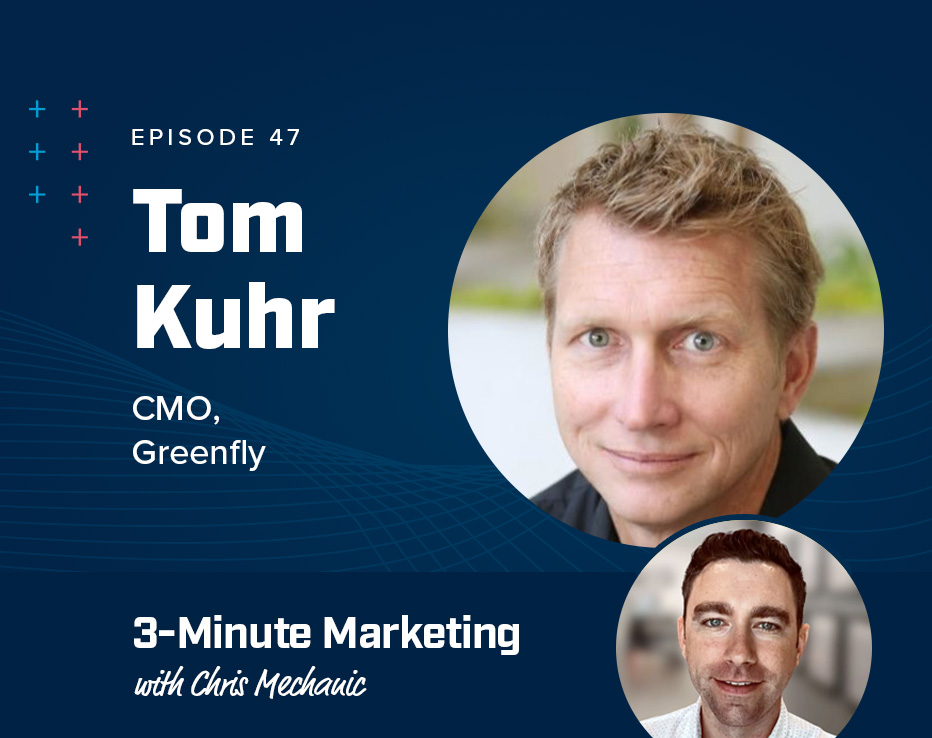
The straightforward, A-to-Z Google Display Ads guide
Not familiar with the Google Display Network (GDN)? You’re in luck. This article is a Google Display ads guide for beginners. You’ll learn how to set up and target advertising and plan an effective display marketing strategy.
What is display advertising?
Before we get ahead of ourselves, what exactly is display advertising?
Well, it’s simple. Display advertising is just ads that show on the websites or apps that your audience is likely to frequent. You’ve more than likely already seen display ads in action. For example, you’ve been on a content website, and you’ve seen a banner ad up in the header or a square banner in the sidebar—that’s display advertising.
Display ad formats can be static (non-moving), animated visual ads, or text. Text ads are somewhat of a misnomer since people think that text ads are just for search, but you can actually run text ads on a display network as well.
Where do display ads show?
There are two types of Google Display Network targeting:
- Content targeting focuses on where you want your ads to show.
- Audience targeting focuses on the people you want your ads to reach.
Let’s look at each of these in turn.
Content targeting
Concerning content targeting, there are three different mechanisms in place that allow us to define where our display ads will show:
- Keywords. Display keyword targeting lets you specify a list of keywords around a topic(for example, auto insurance). Google Ads will then find relevant websites that include your auto insurance keyword, as well as relevant audiences interested in the keyword.
- Topics. Topics are another targeting option. In this approach, Google gives you a list of topics based on the subject or theme of the website where your ads will show. So, what’s essentially happening here is that Google is looking at every site in its inventory and slotting them into particular categories that advertisers can then target accordingly.
- Placements. Placements allow us to list specific websites where we want our ads to show. So if you wanted your baseball ads to run specifically on MLB.com, provided that Google has the site in its inventory, the ad would be eligible to show there.
Audience targeting
With audience targeting, you’re focusing on the people who will view your ads and not on the content of your ads. Like with content targeting, audience targeting can be broken down into sub-groups:
- Affinity audiences. This targeting is for reaching groups of people based on their long-term interests. So, if I’ve been searching for entertainment news or celebrities over six months, Google discerns that this is habitual behavior for me and puts me in an audience with an affinity for entertainment.
- Intent audiences. Intent audiences are consumers that are actively researching products. With intent audiences, there may be a more narrow timeframe. So let’s say that I’ve been reading entertainment websites over a longer period, but recently, over the last week, I’ve been comparing different vacation packages. Google would then put me in the entertainment affinity bucket because of my long-term interest and the travel intent audience because I’m showing recent interest in going on vacation. Intent-style audiences tend to work better for B2B clients because these are the consumers that are closer to purchasing; they’re further down the funnel.
- Previous site visitors. This segues right into remarketing since you want to recapture those people, and that’s a huge part of display advertising.
A common question that people often have is whether Intent audiences ever align with Affinity. Google Analytics and Google Ads are Google products; you can absolutely log into your Google Analytics account and see the reporting. Naturally, you can then use that information you’ve gleaned to determine not only who your current audience is but also whether those people are showing a certain affinity or intent, as well as which ad is getting more attention and conversions. So intent audiences and affinity definitely interplay with each other.
Understanding remarketing
You’ve probably seen remarketing in action if you’ve ever visited a site or seen a product and noticed that no matter where you go on the internet, it seems like the product is following you.
Just like with other types of display advertising, if users visit your site but don’t convert, they can go into a bucket, and you can serve them remarketing ads on other sites or apps that they subsequently visit. What’s great about this method is that these people have already indicated that they have some interest in your product, so your goal would then be to get them closer to a sale.
Personalized remarketing is particularly important when you have several products or are providing several services. Going back to our insurance example, if you offer auto insurance, homeowner’s insurance, and renter’s insurance, and you wanted to create a remarketing campaign, you wouldn’t want to send people to a generic landing page about all of those different types of insurance you offer. That’s because they are interested in only one type of insurance.
As a better alternative, you could create a remarketing campaign with more targeted display ads and focus on only the users that have visited the auto insurance section of the site. This also allows you to show the user ad creative that focuses solely on auto insurance. In short, it gives them the best possible user experience, tailored to their interests and needs.
Setting up a retargeting campaign
You can easily create a remarketing campaign within Google Analytics. The first thing you’ll want to do is ensure that you target people who only view certain pages, or even certain sections within the page. This way, you’ll be able to define specific criteria like this: “I don’t want to target clients that just visit Page A; I want to target those that visit Page A and section B of that page.”
If there are pages within a site that don’t contain a keyword, you can also set up additional conditions. This customization allows you to narrow down your audience even more precisely. You can then give that custom audience a name and even target those who visited during a specific timeframe, like within the last 30 or 180 days or anything in between.
Now you’ve got an audience. The next step is to target your remarketing audience within a display advertising campaign. When you go through this process and select a goal, Google is going to try to customize your campaign for you, but you can (and should) set this up for yourself.
Tying together your campaign and custom audience
When setting up your remarketing campaign, you’ll notice that you can target the custom audience that you just set up. Even outside of remarketing, there are other types of audiences you can target that Google Analytics provides you by default. You can go back to affinity audiences or intent audiences based on whether people are doing active research for the short term or showing long-term browsing habits.
Over the years, Google has gotten increasingly specific with its targeting options. So in the past, you may have just been limited to a broad, overarching category, like “Food and Dining,” whereas now you can specially tailor your targeting to “Cooking Enthusiasts” or “Fast Food,” for example.
Keep audience groups separate for better performance
One thing you don’t want to do is mix your audiences and campaigns. Keep your targeting separate, whether it’s an independent campaign or ad group. You can absolutely have an affinity bucket and an intent bucket, and you should since this lets you evaluate the performance of different groups or campaigns independently.
Targeting with demographics
Another important point to keep in mind with display ads is demographic targeting. Inside every campaign, you can select certain demographic features ranging from age and gender to parental status and income. Some targeting options may not be available yet depending on the countries you’re targeting. Google is working on rolling out these features to more and more places.
Making sure your campaign is performing well
Once you’ve got your audience targeted, your ad type selected, your actual creative imported, and everything optimized, how can you be sure that the campaign is performing the way you want it to?
Fortunately, display advertising isn’t that much different than any other type of digital marketing campaign. Like with other types of campaigns, you’re going to want to look at both your bids and your budget: allocating most of your budget to the targeting mechanisms that are converting the best at the lowest possible bid. That means looking at things like CPA, click-through and conversion rates, CPCs, and so on.
Measuring performance is also another reason why you want to keep the campaign types separate since you can look at each targeting mechanism individually and be able to make decisions independently of each other without bucketing everything together.
The importance of blocking websites
Blocking is unique to display advertising and an important part of setting up a campaign. Within Google, you can pull a report that shows a long list of where your ads were actually displayed, sorted by clicks, impressions, cost, and performance.
Why does this matter? If you dig a little deeper, you may find that the websites you show on don’t fall within the interest you selected after you’ve collected enough data. There could also be websites that do align with what you’re targeting, but maybe they’re not bringing any conversions. That’s where negating placements come in.
At least once a week, you should go through that list and block websites that are irrelevant, that aren’t performing, or both. Google does a pretty good job of targeting things for you, but there are always going to be some outliers. That’s why it’s a good idea to weed out placements that aren’t working for you so that you can concentrate on those that are.
The final word on understanding Google Display Network targeting strategy
When you’re creating a display ad campaign, always remember that you’re going to want to capitalize on non-converting visitors. You know they have some level of interest, so it’s a good idea to build separate remarketing campaigns that are created for each product or service and then apply them to separate audiences. This separation allows you to narrow down your audiences and target them separately, with different approaches to see what performs best.
Remarketing done right is going to give them the best possible user experience and, in turn, the best performance for you. It’s perfectly acceptable (and recommended) to start small in terms of testing relevant affinity and intent because it lets you see what’s working and what isn’t. Then, once you have enough data and experience, you can build from there.
In addition, remember that Google has a Display Planner that works like its Keyword Planner, so you can try out different configurations as well as keyword and topic ideas to forecast results. Give it a try, test out different things, keep what’s working, and don’t hesitate to get rid of what isn’t.
Now it’s your turn…
Hopefully, this Google Display ads guide has helped you gain a better understanding of the Display Network and some of its nuances. Have you used display advertising yet, or do you plan to do so in the future? Let me how it worked out for you in the comments, and share your success stories!
Most newsletters suck...
So while we technically have to call this a daily newsletter so people know what it is, it's anything but.
You won't find any 'industry standards' or 'guru best practices' here - only the real stuff that actually moves the needle.






